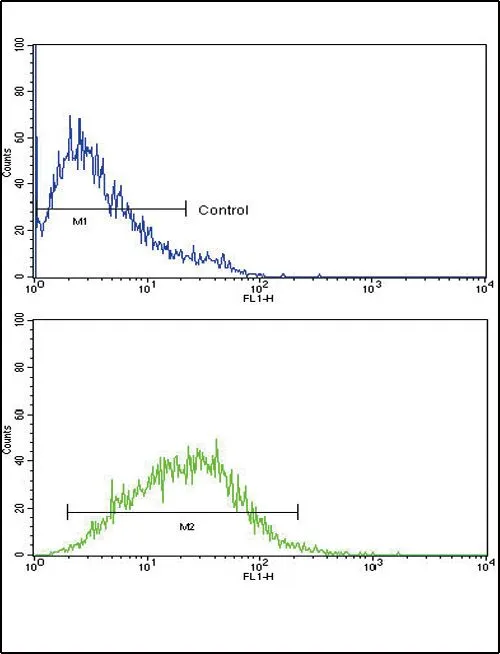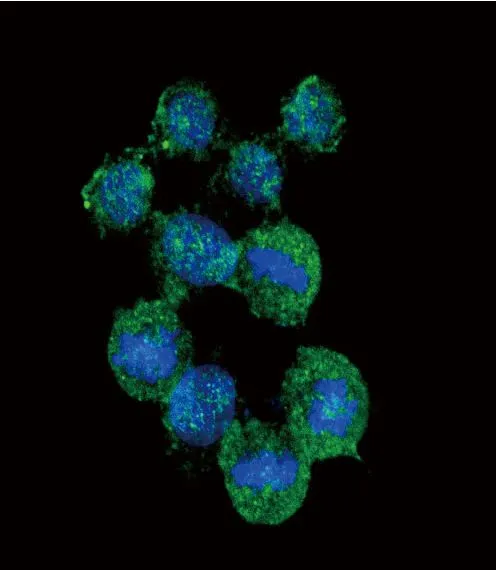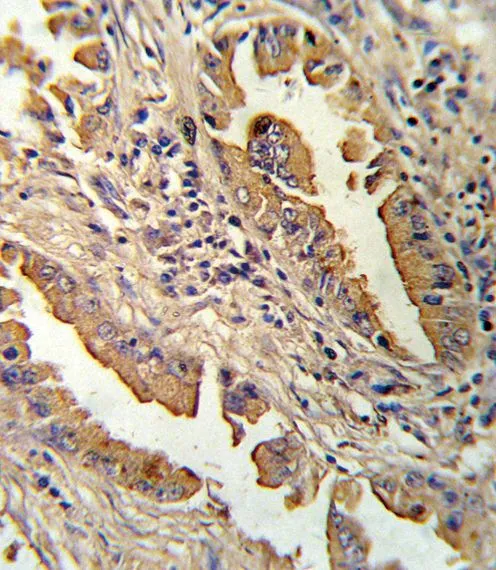
WB analysis of MDA-MB468 cell lysate (35ug/lane) using GTX81140 CXCL8 / IL8 antibody, C-term.
CXCL8 / IL8 antibody, C-term

GTX81140
ApplicationsFlow Cytometry, ImmunoFluorescence, Western Blot, ImmunoCytoChemistry, ImmunoHistoChemistry, ImmunoHistoChemistry Paraffin
Product group Antibodies
ReactivityHuman
TargetCXCL8
Overview
- SupplierGeneTex
- Product NameCXCL8 / IL8 antibody, C-term
- Delivery Days Customer9
- ApplicationsFlow Cytometry, ImmunoFluorescence, Western Blot, ImmunoCytoChemistry, ImmunoHistoChemistry, ImmunoHistoChemistry Paraffin
- CertificationResearch Use Only
- ClonalityPolyclonal
- ConjugateUnconjugated
- Gene ID3576
- Target nameCXCL8
- Target descriptionC-X-C motif chemokine ligand 8
- Target synonymsalveolar macrophage chemotactic factor I; beta endothelial cell-derived neutrophil activating peptide; beta-thromboglobulin-like protein; chemokine (C-X-C motif) ligand 8; emoctakin; GCP1; GCP-1; granulocyte chemotactic protein 1; IL8; interleukin 8; interleukin-8; LECT; LUCT; lung giant cell carcinoma-derived chemotactic protein; lymphocyte derived neutrophil activating peptide; LYNAP; MDNCF; MONAP; monocyte-derived neutrophil chemotactic factor; monocyte-derived neutrophil-activating peptide; NAF; NAP1; NAP-1; neutrophil-activating peptide 1; SCYB8; small inducible cytokine subfamily B, member 8; T-cell chemotactic factor; tumor necrosis factor-induced gene 1
- HostRabbit
- IsotypeIgG
- Scientific DescriptionThe protein encoded by this gene is a member of the CXC chemokine family and is a major mediator of the inflammatory response. The encoded protein is secreted primarily by neutrophils, where it serves as a chemotactic factor by guiding the neutrophils to the site of infection. This chemokine is also a potent angiogenic factor. This gene is believed to play a role in the pathogenesis of bronchiolitis, a common respiratory tract disease caused by viral infection. This gene and other members of the CXC chemokine gene family form a gene cluster in a region of chromosome 4q. [provided by RefSeq, Aug 2017]
- ReactivityHuman
- Storage Instruction2°C to 8°C,-20°C or -80°C
- UNSPSC12352203



